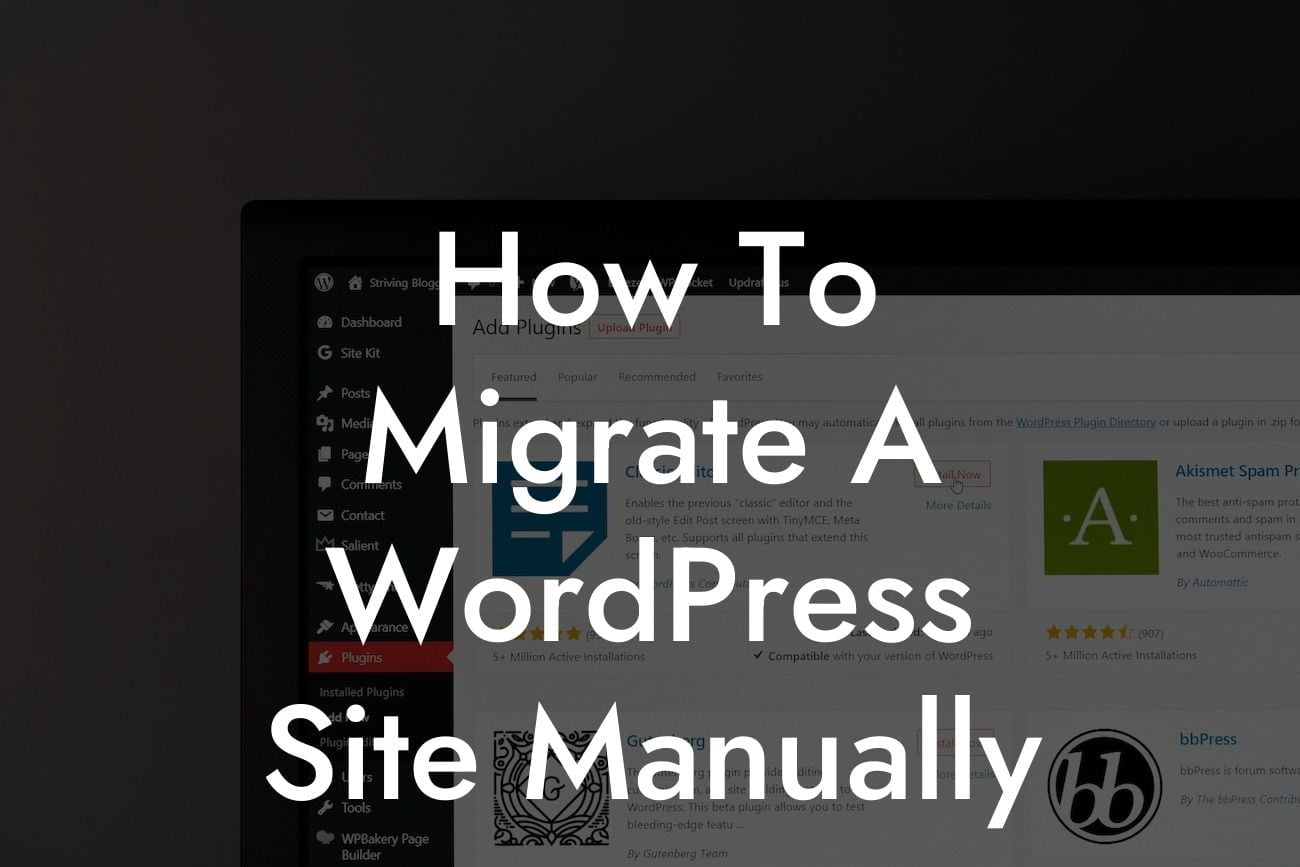Migrating a WordPress site can be a daunting task, especially if you're new to the world of website management. But fear not, because at DamnWoo, we're here to guide you through the process step-by-step. In this comprehensive guide, we'll show you how to migrate a WordPress site manually, giving you full control over the transition and ensuring a seamless experience. No more relying on generic solutions – it's time to embrace the extraordinary.
Migrating a WordPress site manually requires careful planning and execution. Here's a detailed breakdown of the steps involved:
1. Backing Up Your Existing Site:
Before diving into the migration process, it's crucial to create a backup of your existing site. This ensures that you have a failsafe copy in case anything goes wrong during the migration. We'll show you how to back up both your database and files.
2. Setting Up a New Environment:
Looking For a Custom QuickBook Integration?
Creating a separate environment to test the migration is essential to avoid any disruptions to your live site. We'll guide you through setting up a local server or using a staging environment to replicate your site before making it live.
3. Exporting Your WordPress Database:
To migrate your site, you'll need to export your WordPress database from the current hosting. We'll demonstrate how to export the database using phpMyAdmin or a plugin, ensuring all your posts, pages, settings, and user data are safely transferred.
4. Exporting Your Site Files:
Next, we'll guide you through exporting your WordPress site files, including themes, plugins, media, and any customizations you've made. We'll cover both manual file transfer and using FTP to ensure a seamless migration.
5. Importing the Database and Files to the New Environment:
With your database and files exported, it's time to import them into the new environment. We'll explain how to create a new database, import the SQL file, and update the site's wp-config.php file. We'll also show you how to upload your files to the new server.
6. Updating URLs and Paths:
After migration, it's essential to update the URLs and paths in your WordPress database to ensure all links and resources work correctly in the new environment. We'll guide you through this crucial step using search and replace tools or SQL queries.
How To Migrate A Wordpress Site Manually Example:
To illustrate the migration process, let's consider a scenario where you have a WordPress site hosted on a shared hosting provider, and you want to move it to a new cloud-based hosting environment. By following the steps outlined above, you'll be able to successfully migrate your site without any hiccups, ensuring a seamless transition from one hosting platform to another.
Congratulations! You've successfully migrated your WordPress site manually. Now that you've experienced the power of taking full control over your website's transition, it's time to explore other useful guides on DamnWoo. Don't forget to check out our awesome collection of WordPress plugins specifically designed for small businesses and entrepreneurs. Elevate your online presence, supercharge your success, and share this article with others who might benefit from it.













